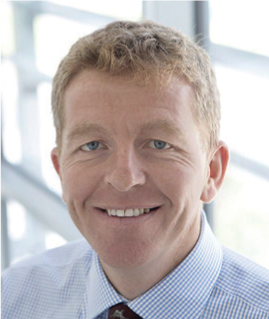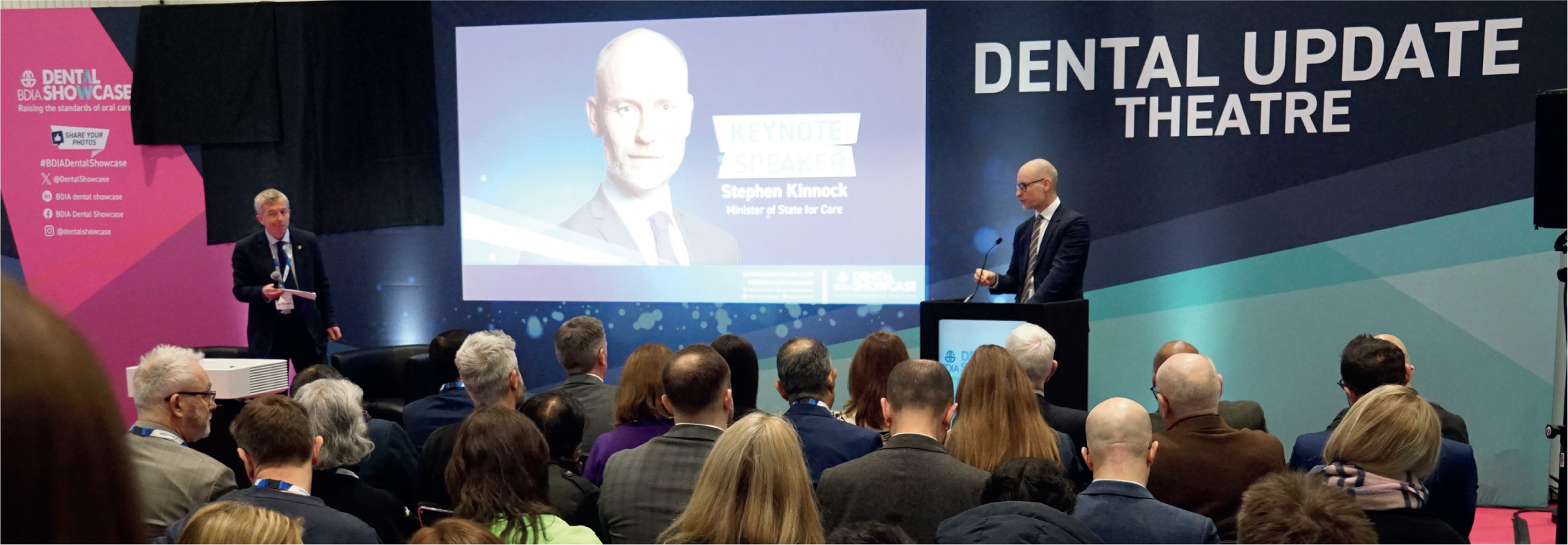Article


Dental Update recently hosted the keynote speech from Minister of State for Care, Stephen Kinnock at the British Dental Industry Association (BDIA) Dental showcase. The event held at London's ExCeL arena is one of the biggest dental events in the UK. The minister's keynote address gave pause for thought on where we are with NHS dentistry now, and looking to the future, and Mr Kinnock seemed fully engaged in looking at solutions in a pragmatic and realistic manner.
Indeed, a new government is often a time of hope and optimism for people, the old guard is brushed aside and a new set of leaders with different policies and priorities set out their plans to make our lives better, often by addressing the problems left by the previous government.
So, should we be optimistic about NHS dentistry? After all, we have been told it is top of the new government's agenda, they campaigned on a pledge to get NHS dentistry back on its feet and regularly held the previous government to account on their dismal record in supporting the sector.
We really do hope the new government takes this opportunity to radically reform NHS dentistry, and it was refreshing to hear the minister come clean with the public and the profession that in a cash-strapped economy this will not be a quick, easy or cheap road to recovery. The main question the government has to answer is what type of NHS dental service are we aiming for without a significant increase in budget?
Over the past two decades the rot has really set in to NHS dental services because the government of the day hasn't come clean. While improvements in living standards have improved oral health overall in the population, oral health inequalities have widened. In many parts of the country, poor oral health is the norm, dental deserts have arisen where there is virtually no access to NHS dental care for adults or children, and in these areas, affordable dental care is out of reach for many in the community. This was fully acknowledged by the minister as he took questions on the Dental Update theatre stage.
However, in the eyes of the public, we have a dental service that is still part of the NHS. Not unsurprisingly, falling investment in NHS dentistry – budget cuts of one-third since 2010 in real terms, and a discredited dental contract have led to a crisis in dental access. The British Dental Association estimates that one in four adults has no access to dental care.1 The obvious fall out is felt in other parts of the NHS, such as GPs, hospitals and A&E where the pieces of a lack of dental access are picked up. Whether you believe in NHS dentistry or not, there are no winners for anyone in society from such a predicament. You only have to look across the Atlantic to predict the future, and the social consequences of a two-tier health system.
Dental access has been a wicked problem ever since the NHS was created. Finding the optimal balance between public purse and a service that provides care for those who will most benefit from it is not a simple ask. There are few countries around the world that have achieved a universal public health dental service, and we respect the challenge in achieving the ‘sweet spot’ so to speak (no pun intended). Priorities in the NHS are political decisions, and the government of the time has to decide what it is prepared to fund. As the fifth largest global economy, the UK could afford more.

The current government has set out plans to improve NHS dental care2 through four main pledges, including much-needed dental contract reform, expanding urgent care provision, supervised toothbrushing and ‘golden hellos’ to incentivize recruitment to dental deserts, but they have not signalled whether this will attract new funding and longer-term prioritization. Access to urgent dental care, and a promise of an extra 700,000 appointments is central to their plans. This plan appears to be one of their quick wins, but even with a modest target like this (on average an extra four patients per practice in England delivering NHS care), it begs the question where is the workforce going to be derived from to deliver them?
While we have more dentists on the GDC register (a commonly cited fact), we have fewer each year providing NHS dental care, and in truth, no one knows how many dentists we actually need to meet population need. While we have more dentists, we also have a growing and ageing population, widening health inequalities and rising patient expectations that all drive demand for dental services. How many is enough? The Association for Dental Groups (ADG) has highlighted over 2700 NHS dentist FTE vacancies in England and over 400 private dental vacancies.3 The lack of dental workforce is a problem across the sector, and not just in the NHS. Recruiting more overseas-trained dentists is one option, and the other is training more dentists, a plan under the previous government that is now on hold as the deckchairs are re-shuffled. Working at a dental school, we are of course biased, but it has been obvious for some time that we need to train more dentists, and the best place for doing this is in dental deserts where there is high unmet need for dental services. This is not the only solution of course, the problem is too big for that; however, from an educational perspective, patients with high treatment needs provide excellent learning for dental undergraduates, and therefore training them in areas that experience access issues is a sensible strategy and one that widens access to care.
At Peninsula Dental School where we work, we have a strong community ethos. Our four facilities are geographically dispersed across the far southwest peninsula,4 and we operate in a long-standing dental desert. The school and its curriculum have been designed in such a way as to provide service to patients in a primary care environment who do not otherwise have access to a dentist, and we operate a dedicated outreach team to bridge the gap between the work of the dental school and the need in local communities. To amplify our impact, we will shortly be opening a new 14-chair city centre dental practice in Plymouth, close to areas of deprivation. It will operate a range of dental services from a multidisciplinary team including undergraduate and postgraduate dentists in training. In response to the 22,000 patients on a waiting list for a dentist in Plymouth and high demand for urgent dental care services that cannot be met by current service provision, the practice will involve dental students providing urgent dental care as a routine part of their curriculum. This will benefit them and enhance their education and training, while at the same time providing more support to patients and the local system – a win-win for all partners. Centres like this that combine training and service together in dental deserts, responsive to local needs may provide more resilience in NHS dental service provision than traditional models, and we will be evaluating this as the practice starts work.
As Mark Twain said, ‘the secret of getting ahead is getting started’ and we hope to be operational in the practice later this year. Let's hope the government also does the same with the plans for improving access to NHS dentistry.
It was fantastic that Minister Stephen Kinnock shared our views on solutions to the access problems of NHS dentistry, and similarly, we much appreciated that he took the time to appear at the Dental Update theatre, and speak so openly on the challenges that lie ahead. Our community is there to support the government in improving access, and Dental Update sits at the heart of this, no matter your political persuasion.
